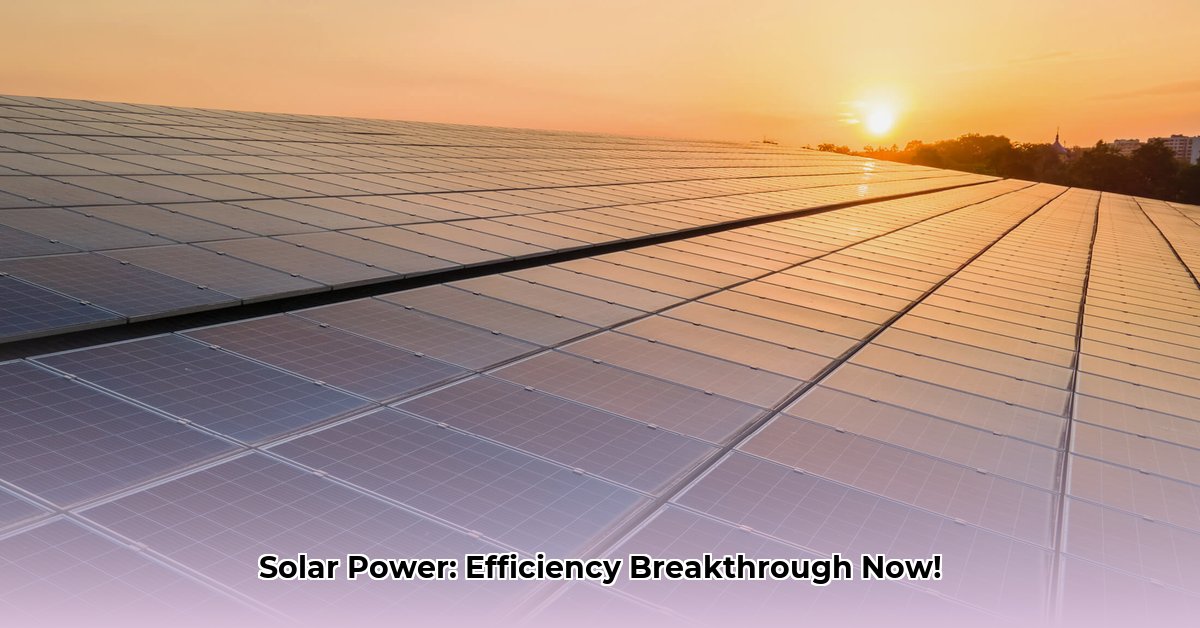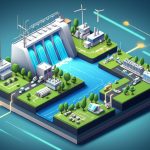Want to get the most out of your solar panels and maximize your savings? This article breaks down the science behind solar power in simple terms, showing you how to avoid common mistakes and boost your energy production. We’ll explore different types of solar panels, examine costs and benefits, and provide a clear plan to make your solar system more efficient. This guide covers everything from the basics of how solar cells work to the latest tech and what the future holds for solar energy, empowering you to maximize your sun-powered savings. Learn about solar energy storage options at [this helpful resource](https://txgenco.com/can-solar-panels-store-energy).
Solar Panel Energy Transformation – Maximizing Renewable Energy
Harnessing the sun’s power to generate electricity is a game-changer thanks to the process of solar panel energy transformation. Let’s dive into how it works and what the future holds for this technology. Understanding solar energy utilization, solar energy harvesting, and solar cell technology is vital for comprehending modern renewable technologies.
Understanding the Magic Behind Solar Power – Photovoltaic Effect Explained
At the heart of solar power is the photovoltaic effect. Sunlight, composed of tiny energy packets called photons, strikes a solar panel. These photons interact with electrons within the panel’s semiconductor material (typically silicon). This interaction energizes the electrons, causing them to flow and generate electricity. This clean, efficient process depends heavily on the material and design of the panel. While silicon is most common, scientists explore materials that could further boost efficiency. Advances in materials science promise even greater efficiency in solar energy transformation.
Solar Panels: A Variety of Choices – Monocrystalline vs. Polycrystalline
Several solar panel options exist, each with its own advantages. Crystalline silicon panels, divided into monocrystalline (one large silicon crystal) and polycrystalline (many smaller crystals) types, are the most common. Monocrystalline panels convert sunlight into electricity more efficiently but are more expensive. Polycrystalline panels offer a budget-friendly option with slightly lower efficiency. Thin-film solar panels, using materials like cadmium telluride or copper indium gallium selenide (CIGS), are flexible and can be integrated into surfaces, but their efficiency is typically lower. The choice depends on your needs and budget. Understanding the key differences between solar panel materials will helps determine which is best for you.
The Numbers Tell the Story: Efficiency and Cost – Data-Driven Analysis
Let’s examine the practical impact of these differences. Real-world data can provide a clearer picture. For instance, over the past five years, the efficiency of monocrystalline solar panels has increased from 18% to over 24% in some cases. This improvement means more electricity from the same panel area, directly linked to advancements in solar panel energy transformation.
| Panel Type | Typical Efficiency Range (%) | Approximate Cost per Watt ($) |
|---|---|---|
| Monocrystalline | 20-24 | 0.90-1.50 |
| Polycrystalline | 16-20 | 0.70-1.10 |
| Thin-Film (CdTe) | 11-16 | 0.60-0.90 |
| Thin-Film (CIGS) | 12-18 | 0.70-1.00 |
Higher efficiency often means a higher price. The best panel type balances performance and affordability. When exploring thin film solar cells and other solar panel costs, you can make an informed decision.
The Bigger Picture: Cost, Environment, and the Future – Sustainable Energy Solutions
The price of solar energy has decreased significantly, making it a more competitive alternative to fossil fuels. Solar power provides environmental advantages by reducing reliance on finite fossil fuel resources and lowering carbon emissions. Ongoing research focuses on minimizing the environmental footprint of solar panel manufacturing.
What’s on the Horizon for Solar Energy? – Innovation in Solar Technology
The future of solar energy is promising. Research aims to create more efficient panels, discover better materials, and streamline manufacturing. The emergence of perovskite solar cells is exciting because of their potential for high efficiency rates. We can expect further cost reductions and wider adoption of solar energy. What role will perovskite solar cells play in the future of renewable technology?
Taking Action and Exploring Further – Maximizing Your Solar Investment
Consider these steps to harness solar energy’s benefits:
- Invest in high-efficiency panels: Higher-efficiency panels can save you money long-term.
- Explore financial incentives: Governments offer incentives to encourage solar energy adoption.
- Focus on long-term savings: The long-term cost savings are significant.
- Support innovation: Supporting research helps accelerate progress and keep costs down.
The journey of solar panel energy transformation is dynamic. Continuous advancements promise a future powered by cleaner, cheaper, more accessible solar energy.
How to Improve Solar Panel Efficiency and Reduce Costs Long-Term – Optimizing Solar Power
Key Takeaways:
- Maximizing solar energy production requires a holistic approach: panel selection, installation, maintenance, and smart energy use.
- Higher-efficiency monocrystalline panels generally outperform polycrystalline options.
- Regular cleaning, shade mitigation, and system monitoring are crucial for optimization and ROI.
- Long-term cost reduction strategies include microinverters/power optimizers, battery storage, and energy-efficient appliances.
- Environmental factors influence maintenance needs. The cost-benefit analysis of advanced technologies is site-specific.
Understanding Solar Panel Efficiency – Energy Conversion
Sunlight initiates the photovoltaic effect, converting light into electricity. Panel technology heavily influences conversion efficiency. Monocrystalline silicon panels have higher efficiency rates compared to polycrystalline panels. Solar panel efficiency directly impacts the amount of energy produced.
Practical Steps – Solar Panel Maintenance
-
Smart Panel Selection: Monocrystalline panels may provide a higher ROI long-term, despite a higher initial cost.
-
Optimal Installation: Proper panel orientation and tilt angle maximize energy capture.
-
Maintenance Matters: Regularly cleaning your panels removes dirt and debris, reducing energy loss. Cleaning frequency depends on location.
-
Shade Mitigation: Strategic panel placement can minimize shading’s effect.
-
System Monitoring: Regular monitoring helps identify potential issues early.
-
Long-Term Investments: Microinverters or power optimizers enhance efficiency. Battery storage allows for utilizing excess solar energy, improving self-sufficiency.
-
Energy Efficiency: Investing in more energy-efficient appliances reduces your overall energy needs, improving your system’s ROI.
Addressing Cost Concerns – ROI Analysis
While high-efficiency panels might have a higher initial cost, their long-term energy production often outweighs this. Consider whether the long-term efficiency gains of technologies like trackers justify their added expense. Understanding the factors that influence the financial viability of solar power projects is key to a sucessful investment.
Environmental Considerations – Sustainability
The environmental impact of solar energy is positive, but understanding the life cycle of solar panels is crucial. Choosing panels with a longer lifespan makes economic and environmental sense. How can we improve the sustainability of solar panel production and ensure proper disposal?
Future Trends – Emerging Technologies
Advances in solar panel technology are continually improving efficiency and reducing costs. Staying updated on emerging technologies helps you make informed decisions. Consider the emerging technologies that are set to revolutionize solar energy utilization.
Proven Tactics For Mastering Solar Panel Energy Transformation in Arid Climates – Solar Energy In the Desert
Key Takeaways:
- Solar panels can create beneficial microclimates in arid regions, boosting plant growth.
- However, this depends on land use and panel design.
- Successful implementation requires careful planning, proactive mitigation of risks, and ongoing monitoring.
- Degraded lands minimize environmental disturbances.
- Agrivoltaics and other dual-use strategies maximize land utilization.
- Collaboration ensures responsible deployment.
Harnessing the Sun’s Power in Desert Environments – Desert Solar
Arid climates offer abundant sunshine but require careful consideration due to extreme heat and scarce water. How can we maximize efficiency and minimize environmental impact? Let’s find out Proven Tactics For Mastering Solar Panel Energy Transformation in Arid Climates. How can we take advantage of renewable energy resources in arid zones?
Site Selection: Laying the Foundation – Minimizing Impact
Prioritizing degraded lands minimizes habitat disruption. This approach addresses concerns about habitat fragmentation. What are the best practices for sustainable land management in solar energy projects?
Panel Type and Design: Maximizing Efficiency and Microclimate – Bifacial Solar
Bifacial panels, capable of absorbing light from both sides, are interesting in arid regions. Tilt angle optimizes energy capture and can enhance microclimatic benefits. How can the design of solar panels improve ecological benefits in arid environments?
Advanced Technologies: Pushing the Boundaries – CSP Systems
Concentrated solar power (CSP) systems use mirrors to concentrate sunlight, increasing the temperature for conversion efficiency. Research improves the performance of solar cells in extreme heat. How does concentrated solar power technology enhance electricity generation?
Water Management: A Crucial Consideration – Water Conservation
Innovative cooling techniques, such as evaporative cooling, can enhance efficiency while minimizing water consumption. Minimizing water usage during installation and operation is critical. What water management strategies can be employed to reduce water use by solar panels?
Monitoring and Adaptive Management: Ensuring Long-Term Success – Adaptive Management
Regular monitoring informs adaptive management strategies. Effective adaptive management relies on evaluation and optimization. Through course-correction we can maintain sustainable practices. Why is ecological monitoring essential for sustainable solar energy development?
Community Engagement: Collaboration for a Sustainable Future – Stakeholder Engagement
Local knowledge is crucial for effective planning and mitigation. Community involvement ensures the long-term success and acceptance of solar energy projects. How can community collaboration foster social acceptance of solar energy?
Regulatory Frameworks and Policy: Guiding Sustainable Development – Environmental Regulations
Government regulations ensure responsible development, including environmental impact assessments and guidelines for site selection. How do environmental regulations ensure long term sustainability for solar energy?
Current Knowledge on Novel Semi-Arid Photovoltaic Ecosystems, Their Impacts on Biodiversity and Implications for the Sustainability of Renewable Energy Production.
Essential Guide To Solar Panel Energy Transformation Costs And Benefits For Residential Use – Home Solar
Key Takeaways:
- Significant long-term cost savings are achievable through solar panel systems.
- Home values increase with solar installations.
- Environmental benefits, like reduced carbon emissions, are substantial.
- Financial ROI varies; careful planning is crucial.
- Government incentives and financing options impact costs.
- Regular maintenance is essential.
Understanding the Upfront Investment – Solar Installation Cost
A typical 5kW residential system can cost $15,000 to $25,000 before incentives. Investing in your home’s and the planet’s future is a worthwhile investment. What is the typical cost of solar panel installation for residential properties?
Long-Term Financial Rewards – Home Value
Solar reduces monthly electricity bills. Studies show a home value increase, often exceeding $15,000, thanks to solar installations. How do solar panel installations increase the value of residential real estate?
Maximizing Your Savings: Incentives & Financing – Solar Financing
Tax credits, rebates, and other programs decrease initial costs. Explore financing options like loans or PPAs. What financing options are available for residential solar panel installations?
Environmental Impact: A Clean Energy Choice – Carbon Footprint
Switching to solar reduces your carbon footprint. You’re decreasing your reliance on fossil fuels and helping combat climate change. How can solar power reduce carbon emissions for homeowners?
System Performance & Maintenance – Prolonging Lifespan
While solar panels last over 25 years, regular maintenance is key. Keep your panels clean and plan for occasional repairs. A well-maintained system delivers optimal performance. How can solar panel maintenance positively impact efficiency and longevity?
Factors Affecting ROI: A Personalized Approach – ROI Calculation
Your individual ROI depends on electricity rates, sunlight availability, energy consumption, and system size. Consult with a solar installer to design a system tailored to your needs. How is the return on investment calculated for residential solar panel systems?
Navigating the Regulatory Landscape – Solar Regulations
Regulations surrounding solar energy vary. Staying informed about your local regulations is crucial. What permits are required for solar panel installation in your area?
- Fun Facts About Hydroelectric Energy You Might Not Know - January 7, 2026
- Fun Facts About Hydropower And How Water Makes Electricity - January 6, 2026
- Hydro Power Everyday Keeps Lights On and Water Flowing - January 5, 2026
















